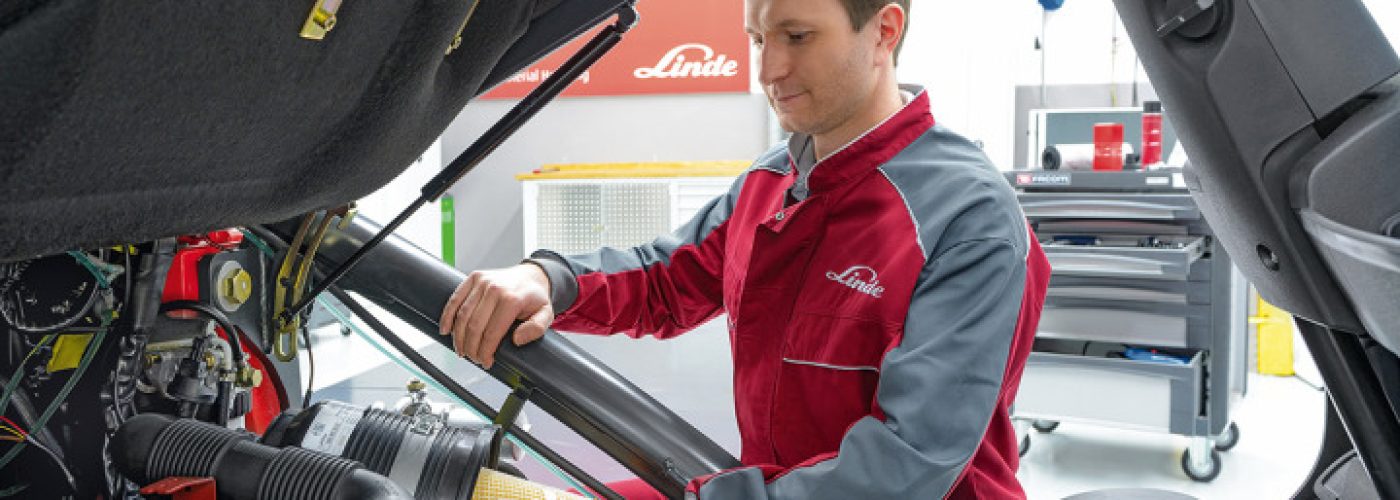In busy warehouse environments it is easy for the number of hours to increase on forklift trucks, with some vehicles in near-constant use 24/7, rolling on from one shift to the next. Transporting such a high volume of goods, both indoors and out, inevitably leads to considerable wear and tear, so it’s essential to keep an eye on maintenance and protect your fleet against long-term damage.
Under the Provision and Use of Work Equipment Regulations 1998, it’s a legal requirement to ensure that all plant machinery remains in a good state of repair, but another reason to take maintenance seriously is to minimise downtime, so here’s some advice from the experts at Linde Aftersales on how to keep your forklift trucks in tip-top shape.
- Check your checklist
Forklift operators should conduct a thorough assessment of vehicles at the start of every shift, safeguarding against problems going unnoticed and unreported. Manufacturers will supply documentation detailing what to look out for, covering everything from fuel and oil levels to the lifting mechanism and safety features.
It’s fundamental that staff actually complete these daily checks rather than simply paying lip service to them, in order to protect against unnecessary damage and potential accidents. A clear structure should be in place for problems to be flagged and resolved.
- Replace tired tyres
Following your manufacturer’s recommended guidelines for tyre safety will ensure sufficient grip for movement, friction for braking and overall comfort. Naturally, the wheels are the only part of the vehicle in constant contact with the ground, leaving them vulnerable to damage, so it’s important to monitor their condition.
Solid forklift tyres should have a wear indicator, known as a ‘60J line’, and once the depth reaches this point it only has 100 hours of use remaining. It’s crucial that you replace tyres in time, as instability will jeopardise both safety and productivity.
Tyres should only be fitted and repaired by trained professionals.
- Don’t drag
Whilst forks should be lowered when travelling, they should still be clear of the ground; making them drag along the floor is an all-too-frequent cause of damage that is easily avoided. Dragging also results in extra fuel consumption – an unnecessary cost.
The weight of loads should be evenly centred, and forks should be lifted to a safe height.
- Prevention is better than cure
Driving over sawdust, pallet wrap or loose packaging can potentially lead to issues with air filters and blocked radiators, as well as causing damage to shaft bearings, so all debris should be regularly cleared from the warehouse floor.
Potholes should be immediately tended to, as they can cause damage to the chassis and tyres, and drivers should avoid wearing tool belts, as sharp objects can create holes in the leather seating, which will only deteriorate over time.
- Book your Thorough Examination
Whilst daily checks will help to guarantee optimal performance, it’s a legal requirement to pass a Thorough Examination of forklift machinery every year, much in the same way that cars have to complete their MOT.
Failing to keep up with regular inspections will put the lifespan of your equipment and the safety of staff at risk, so it’s crucial to ensure that your forklift trucks are kept in good working order.





